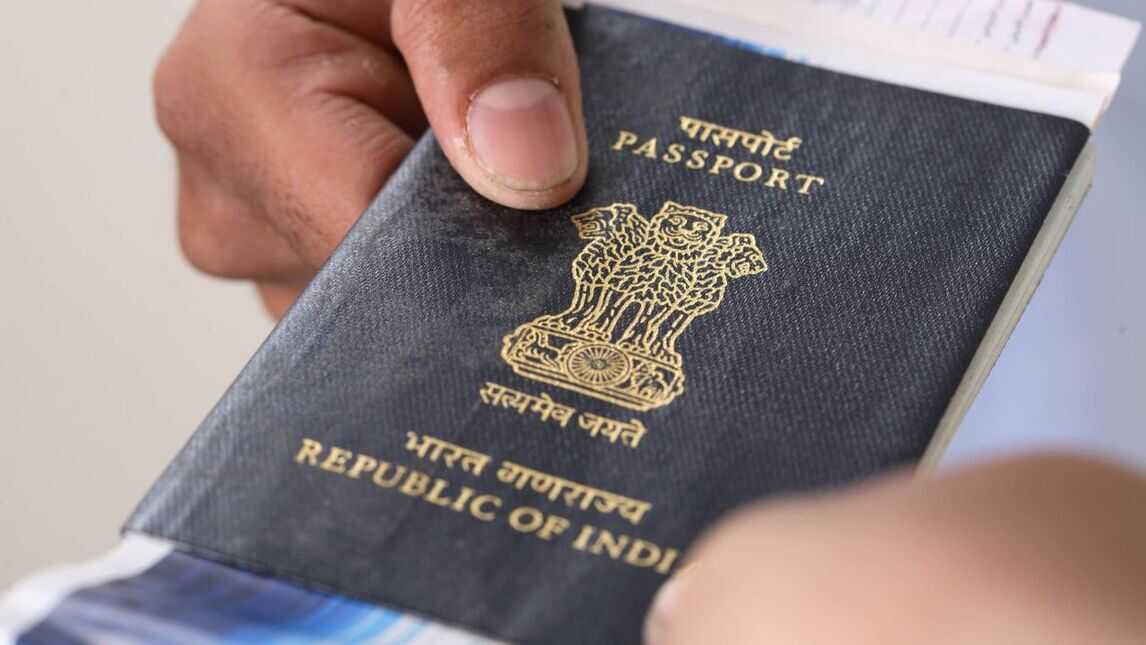7 Crore+ Customers

Affordable Premium

7 Crore+ Customers

Affordable Premium



The different types of passports are mainly distinguishable by the color of their covers.
This classification not only streamlines the process of identification at international borders but also aligns with the global standards of passport issuance, ensuring Indian citizens are adequately equipped for their overseas endeavours, whether for work, diplomatic missions, or leisure.
Let’s find out all about these different passports in India!
The different types of passports distinguish individuals by the type of travel they are permitted to undertake with that passport.
The below table clearly shows the various types of passports and the category of people who are assigned each of them:
|
Type of Passport |
Category of People Assigned |
|
Blue (Ordinary) |
Any Indian Citizen by birth, descent, neutralisation or naturalisation. |
|
White |
Indian Govt. Officials, IAS Officers, Indian Police Service Department Officials |
|
Maroon (Diplomatic) |
Indian Foreign Services officials, officers from ministry of external affairs, dependents including parents, spouse, children, official hostess travelling with the official, officials with diplomatic status, officials on Indian government-related business |
|
Orange |
Those who have not studied beyond 10th standard. |
Also known as type P passport, this is the ordinary passport and is issued to the general population of India. These can be used by regular individuals for leisure, business, or educational trips to foreign countries.
The blue colour differentiates it from other passports with official status.
These types of passports are issued to only Indian Government officials who are travelling outside the country for official purposes. These officers include those working at the IAS and Indian Police Service Department.
A diplomatic passport is issued to diplomats and eligible government officials for international travel and assignments. It is maroon in colour.
The maroon colour differentiates it from regular or official passports, symbolizing the holder's high-ranking position and duty to represent their country abroad.
It is a powerful tool facilitating diplomatic missions and fostering international relations.
On top of that, immigration is easier for people with these types of Indian passports than general passport holders.
The Orange Passport was an initiative by the Indian government to distinguish passports of less educated citizens, particularly those requiring emigration clearance for travel to a group of specified countries.
Aimed at streamlining the process and enhancing the safety of Indian workers abroad, the Government launched orange-coloured passports back in 2018, which does not contain the address page.
These types of passports are designed mainly for people not having education beyond class 10. Besides, these people fall under the ECR category.
Note that your passport will help verify your citizenship and its usage is not just limited to international trips. You can make use of this document for various reasons, from school enrolment and registration to obtaining a driver’s licence, and so on!
So, before going ahead, it is advisable to know different types of passports in India and the eligibility parameters you need to meet to acquire them.
Each of the passport types mentioned above has a different purpose and is issued to eligible persons. The table below clearly indicates the different types of passports and their eligible group:
|
Types of Passport |
Eligibility |
|
Blue |
Any Indian Citizen by birth, descent, neutralisation or naturalisation. |
|
White |
Indian Govt. Officials, IAS Officers, Indian Police Service Department Officials |
|
Maroon |
Indian Foreign Services officials, officers from ministry of external affairs, dependents including parents, spouse, children, official hostess travelling with the official, officials with diplomatic status, officials on Indian government-related business. |
|
Orange |
Those who have not studied beyond 10th standard. |
You can refer the below-mentioned steps to apply for a passport in India online:
You can also print out the payment receipt containing your appointment or reference number by clicking on 'Print Application Receipt'.
Upon completing this process, visit the Passport Seva Kendra or Regional Passport Office where you have booked an appointment. Make sure to carry all documents required for verification.
After that, you will need to go through police verification for your passport. Here, they will assess all the information provided in your form and visit the address mentioned there.
Availing a new passport can be difficult and time-consuming if you do not have all the documents ready with you.
Passport application fees differs across different categories like for minors, adults, for 36-page booklet or a 60-page booklet. It is higher for the tatkal passports. Let's have a look at the passport application fees under different categories:
| Age of the Applicant | Number of Pages in the Booklet | Passport Validity | Normal Passport Fees | Tatkal Passport Fees |
| Below 15 Years | 36 | 5 Years | ₹ 1,000 | ₹ 3,000 |
| Aged 15 to 18 years | 36 | 10 years | ₹ 1,500 | ₹ 3,500 |
| Aged 15 to 18 years | 60 | 10 years | ₹ 2,000 | ₹ 4,000 |
| 18 years or older | 36 | 10 years | ₹ 1,500 | ₹ 3,500 |
| 18 years or older | 60 | 10 years | ₹ 2,000 | ₹ 4,000 |
| Age of the Applicant | Number of Pages in the Booklet | Passport Validity | Normal Passport Fees | Tatkal Passport Fees |
| Below 15 Years | 36 | 5 Years | ₹ 1,000 | ₹ 3,000 |
| Aged 15 to 18 years | 36 | 10 years | ₹ 1,500 | ₹ 3,500 |
| Aged 15 to 18 years | 60 | 10 years | ₹ 2,000 | ₹ 4,000 |
| 18 years or older | 36 | 10 years | ₹ 1,500 | ₹ 3,500 |
| 18 years or older | 60 | 10 years | ₹ 2,000 | ₹ 4,000 |
Read on to know about the documents required for passport application process.
The passport application process in India has become hassle free in the recent years.
If you submit the correct documents, you can expect to receive your passport within 30-45 days in the normal category and within 1-3 days in the tatkal category.
Here are the major required documents for passport:
| Documents Category | Adults | Minors |
| Identity Proof | Any of the mentioned documents – Aadhaar card, voter card, PAN card, driving licence | Aadhaar card, parent’s passport copy attested by them or by self |
| Address Proof | Any of the mentioned documents – Aadhaar card, voter card, PAN card, driving licence, electricity bill, utility bill, rent agreement, utility bill, landline bill, mobile bill, gas connection proof, passbook of running a bank account, a certificate from the employer on company letterhead (should be a reputed company) | Parent's present address proof including passbook of running a bank account, electricity bill, utility bill, rent agreement, utility bill, landline bill, mobile bill, gas connection proof |
| Age Proof | Any of the mentioned documents – Birth certificate issued by the municipal corporation, declaration given by any orphanage on official letterhead confirming the date of birth of the applicant, school leaving certificate, policy bond issued by the Public Life Insurance company where the date of birth of the policyholder is mentioned | Birth certificate issued by the municipal corporation, declaration given by any orphanage on official letterhead confirming the date of birth of the applicant, school leaving certificate, mark sheet of secondary or higher secondary, policy bond issued by the Public Life Insurance company where the date of birth of the policyholder is mentioned |
| Other documents | Income tax assessment order, educational certificate, spouse passport copy (first and last page of passport where applicant's name as the spouse is mentioned) | Annexure C/D as applicable, photo if minor is below 4 years of age, parents' passport copy showing spouse name endorsed or marriage certificate of parents, any other document as applicable according to parents’ marital status. |
While the above documents are the basic requirements for every category of applicant, a few additional documents are required for the official/diplomatic passports:
Apart from documents, individuals need to learn about the validity and expiry of a passport. Read along!
Your passport will be valid for only 10 years, notwithstanding its type. However, the passports issued to minors below 15 years are valid for just 5 years or till they turn 18. For minors between 15 -18 years, they can apply a passport valid for 10 years or till they turn 18.
You should make it a point to renew your passport within the validity period. With easy access to the internet, the renewal process of different types of Indian passports can be done online.
The diversity of passports in India reflects the country's commitment to fulfilling the varied travel needs of its citizens, at the same time, catering to security and international cooperation.
It is important to understand the different types of passports and their distinct importance so that you are better aware and can navigate international borders more smoothly.